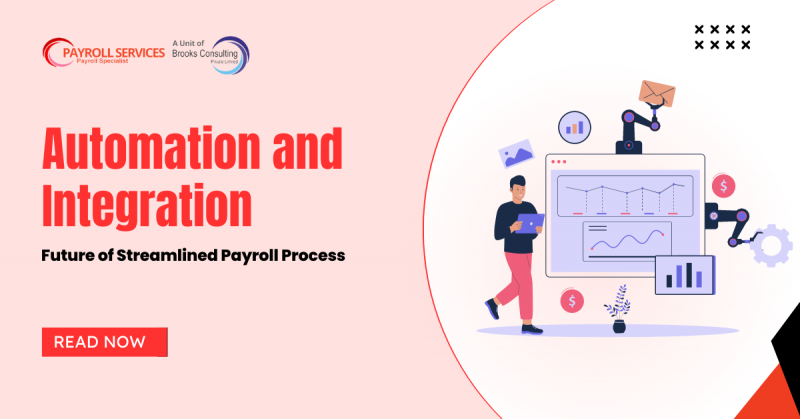Automation and Integration: Future of Streamlined Payroll Process
In the contemporary business landscape, where numerous companies vie for supremacy, the key to success lies in the dedication and efficiency of the workforce. Motivating employees to perform optimally is pivotal for organizational success. A fundamental approach to achieve this is by meticulously managing payroll processing steps and payment structures in favor of the employees. After all, employees primarily engage in work for monetary compensation and other allowances, and ensuring fair remuneration is crucial for their satisfaction and commitment to fulfilling the company’s needs.
In our technologically driven world, Artificial Intelligence (AI) emerges as a significant game-changer. The colossal amount of data generated by businesses can be prone to manual errors and proves to be a tedious, time-consuming task. Integrating AI software into companies can substantially alleviate this workload, enhancing accuracy in data interpretation. This article explores the intricate process of payroll management and how AI can revolutionize it.
Understanding the Payroll Process
The payroll process involves a series of steps that vary across companies but adhere to employment and labor laws. Key steps in the process include:
- Giving Unique ID: Assigning unique identification numbers to employees to monitor their salaries or hourly work.
- Time Estimation: Collecting time information through methods like biometrics to accurately track working hours.
- Gross Pay Calculation: Computation of total salary or wages without deductions, including bonuses and reimbursements.
- Deducting Taxes: Calculating and deducting various taxes, such as Social Security, state and local taxes, and Medicare.
- Employee Deductions: Deducting additional employment-related deductions like insurance and retirement plans.
- Net Pay Calculations: Formulating the employee’s net pay by subtracting deductions from the gross pay.
- Approving the Payroll: Thoroughly reviewing and approving the payroll to ensure accuracy before salary crediting.
- Payment: Disbursing salaries through suitable methods like cash, direct deposit, or cheques.
Role of HR in Payroll Management
The HR department plays a pivotal role in managing payroll, particularly in larger firms dealing with substantial data. Manual handling becomes prone to errors, jeopardizing employee trust. This is where AI software becomes invaluable, efficiently managing data and ensuring payroll accuracy.
What is Payroll Automation and Integration?
Automated payroll systems offer a more efficient approach to payroll management, eliminating manual tasks. Integration with data analytics enhances the system’s potential, providing accurate forecasting based on real-time data. This integrated approach is constructive and more straightforward, eliminating the need for outsourcing, which poses risks to data security and incurs higher costs.
Common Errors in Payroll Systems
Manual payroll handling often leads to common errors, including mismanagement of data, miscalculations, errors in time tracking, and higher costs. These errors can undermine employee trust and compromise company efficiency.
Benefits of Payroll Automation
- Increase in Efficiency: Automated systems are more efficient, reducing human errors and administrative bias.
- Comparatively Cheaper: Contrary to common belief, AI is cost-effective in the long run, redirecting costs to other operational areas.
- Accuracy: Automated systems ensure precise calculations, reducing the risk of errors in payroll processing.
- Faster Approach: Automation allows quick and automatic calculation of payroll, saving time.
- Time Tracking: Automated systems accurately track employees’ working hours, preventing overpayment or underpayment.
- Flexibility: These systems provide flexibility in managing data according to the number of employees.
- Pay Transparency: Ensures fair compensation to all employees, fostering transparency.
Possible Concerns About Payroll Automated Systems
While the benefits are evident, concerns include potential hacking threats, impact on manpower, and the need for technical training. Companies must address these concerns effectively to maximize the advantages of automated payroll systems.
Automation and Integration of Data Analysis
The synergy between automation and data analysis enhances their potential. Predictive analytics helps in understanding trends based on real-time data, optimizing workforce management and forecasting future costs.
Choosing an Automated System for the Company
Selecting an automated system involves considering factors like easy integration, customization, user-friendliness, compliance with rules and regulations, and robust data security.
Frequently Asked Questions:
- What is payroll processing in HR?
Payroll processing in HR involves calculating and crediting salaries to employees, considering various factors like overtime, taxes, and insurance. - What is the advantage of adopting automated systems for payroll?
Automated systems reduce errors, enhance accuracy, maintain payroll transparency, and efficiently manage vast amounts of data. - What are the future trends in payroll automation?
Future trends include the integration of digital wallets, blockchain technology, and the use of AI and ML for enhanced payroll automation.
Conclusion
As technology continues to advance, the future of payroll systems lies in automation and integration. By adopting AI-powered payroll systems, companies can mitigate errors, increase accuracy, and ensure compliance with rules and regulations. The evolution of payroll systems through automation is a smart choice for companies seeking efficiency, transparency, and sustained growth.

